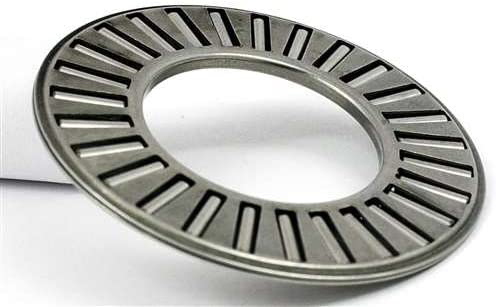Types of Needle Roller Thrust Bearings
There are several types of needle roller thrust bearings, including Needle roller thrust bearings, Tapered roller thrust bearings, Drawn cup needle roller bearings, and radial needle bearings. Each type has specific properties that make it ideal for certain applications. If you're looking for a specific type, read this article to learn about some of the main characteristics.

Needle roller thrust bearings
Needle roller thrust bearings are commonly used in many applications. These bearings can carry both single and double-direction thrust loads. They are lightweight and feature a small cross section for mounting in housings. Needle roller thrust bearings also come in self-aligning versions, which are ideal for applications where deflection or alignment are difficult. Needle roller bearings are described in a variety of ways by manufacturers, including flat, grooved, and convex rollers.
Needle roller thrust bearings are not suited for high-speed applications. This is due to their small diameter, which limits the amount of lubricant that can be incorporated into the bearing. This can result in high levels of heat and friction. This is why needle roller thrust bearings are usually used for lower-speed applications.
Needle roller bearings have a history of reliability and performance. They are considered to be one of the most reliable machine elements. As a result, they have become increasingly popular for a variety of applications. X-life needle bearings are a higher-performance brand from INA. They feature a longer rating life and greater dynamic load rating than standard products. As a result, they allow for longer maintenance intervals.
Tapered roller thrust bearings
Tapered roller thrust bearings are used in industrial applications for a variety of functions. They are self-lubricating, lightweight, and corrosion-resistant. They are also available in several types, sizes, and brands. They also meet ANSI and ASME standards. They are also RoHS-compliant and FDA-approved. For more information, visit 123Bearing.com.
Tapered roller bearings are designed to handle both radial and axial loads. The axial load depends on the angle between the raceway and bearing axis, and the higher the angle, the greater the axial load will be supported. In most cases, the contact angle between the roller and bearing is between 10 and 16 degrees, but for larger thrust-load capacities, tapered rollers are available with contact angles up to 30 degrees. They are also mounted in pairs to better handle radial loads. Heavy-duty applications combine two or four rows of tapered rollers.
A tapered roller thrust bearing is a non-separable bearing that consists of a housing and a roller assembly. The rollers are arranged inside the housing in a cage, which retains them and evenly spaces them. The outer ring is a raceway that connects the two halves of the bearing. In addition to the single row version, there are also double-row versions that offer added load carrying capacity.
Drawn cup needle roller bearings
Drawn cup needle roller thrust bearings are a type of bearing with a cylindrical ring. The design of these bearings allows them to transmit torque in one direction and remain free-running in the other direction. Depending on the design, these bearings can have very different load capacities and are ideal for lower-load applications.
One of the main benefits of these bearings is their high sealing capacity. They are used between the needle bearings and the bearing cage. Moreover, they do not require an axial fixture device. They can also maintain their original function even under high-speed and high-load operation. As they are sealed, they can also function for a long period of time without lubrication.
Another advantage of drawn cup needle roller bearings is their long life and low-cost manufacturing. They are used for a variety of applications, including in the throttle shaft of a throttle valve machine. They are easy to manufacture and offer excellent sealing capabilities.
Radial needle bearings
Radial needle bearings offer a range of options for the seal and mounting, depending on the needs of the application. They may be ordered with a single or two-seal arrangement, with the former featuring a lip-contact seal that provides positive sealing with minimal drag. Other options include sealed bearings that have grease pre-loaded into the bearing. Drawn-cup bearings may have a closed-end cup and an open end for added protection and strength.
In addition to radial needle bearings, axial needle bearings are designed to accommodate needle rollers. Their cylindrical profile is made from steel, and they feature a steel cage that provides both inward and outward retention. Some needle roller assemblies are paired with axial bearings, but are not suitable for compensating for misalignments. In addition to causing running noise, misalignments increase the load on cages and adversely affect operating life.
Radial needle bearings are a common option for thrust bearings. They are designed to carry axial loads within a limited space. They can also include other features to improve the lubrication of the bearing. These needle bearings are usually custom-designed to meet specific performance and space requirements. These bearings have applications in many industries, including auto engines. They can reduce friction at key contact points, such as rocker arms and valve lifters. This can improve the car's fuel economy and performance.
- Previous: Spherical Roller Thrust Bearing
- Next: Banded Ball Thrust Bearing











